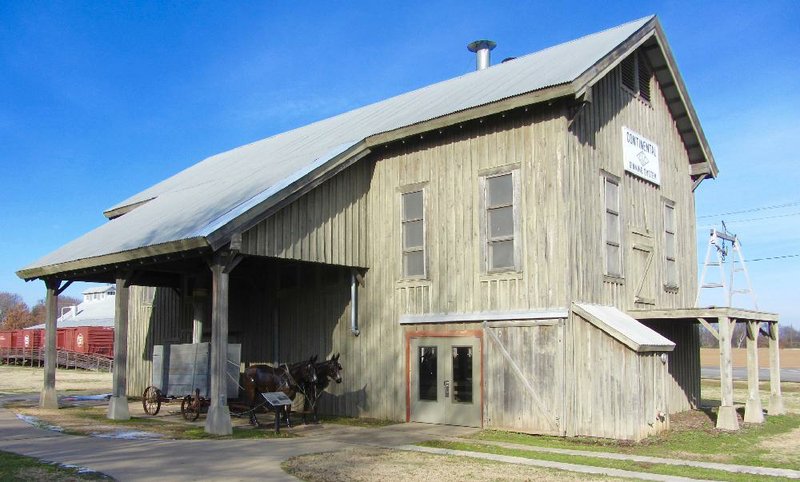SCOTT -- Not so long ago, cotton reigned as king on the flatland farms of eastern Arkansas.
Now, as the Arkansas Democrat-Gazette reported recently, cotton acreage continues giving way to easier crops with more potential profit. Thus the number of cotton gins, the most visible symbol of that longtime agricultural staple, has fallen by more than two-thirds in the state over the past 15 years. Only 26 still operate.
That gives a nostalgic resonance to the Dortch Gin Building, constructed in 1919. It houses a fully restored ginning system as part of Plantation Agriculture Museum, operated in Scott as a state parks unit by the Arkansas Department of Parks and Tourism.
Famously invented in 1793 by Eli Whitney, the cotton gin is a mechanical device that removes the unwanted seeds from picked cotton, a process that previously was so labor intensive as to be uneconomical. The gin revolutionized the U.S. cotton industry -- and inadvertently gave a big boost to slavery.
Visitors exploring the Dortch Gin Building see what the museum's pamphlet describes as "a fully restored ginning system including two 80-saw gin stands, a two-bale press, blowers and belt-driven line shafts." The building's exhibits include replica mules pulling a cotton wagon, evocative photographs and clearly written information panels about the process.
Beyond the gin building is equally impressive Seed Warehouse No. 5, dating to 1948 and listed on the National Register of Historic Places. The cavernous warehouse features truss construction to eliminate the need for interior supporting columns. Visitors enter through two Cotton Belt boxcars, parked on a rail spur once used for loading.
Located in a century-old general store, the main museum building houses a cotton gin as well. But it's a miniature model designed to demonstrate how the crop's seeds were mechanically removed. A park interpreter is happy to show how the mini-gin works and let visitors turn the crank.
Exhibits convey a host of facts about cotton, including the fact that a standard 500-pound bale of the fluffy stuff is enough to make 313,600 dollar bills.
That's right: U.S. currency contains 75 percent cotton (the rest being linen). A bale could also produce 215 pairs of jeans, 1,217 T-shirts or 8,347 handkerchiefs.
The less happy aspects of the cotton plantation system are also explored. A sign reports that the 1860 U.S. census, on the eve of the Civil War, counted 111,115 slaves in Arkansas. They worked mostly on plantations and amounted to nearly one-quarter of the state's population.
After sharecropping mostly replaced slavery after 1865, conditions remained strenuous. Particularly onerous was the picking of cotton, a backbreaking hand labor since replaced by machines. Pickers described their work hours as "from can to can't" -- from when they could first see the sun at dawn to when they couldn't at sunset.
There were at least a few rags-to-riches success stories, conveyed by the museum's exhibit on the remarkable life of Scott Winfield Bond. He was born a slave in 1852 and freed at age 13 after the Union's Civil War victory. Pursuing cotton farming, fruit growing and other enterprises, Bond was one of the wealthiest black Arkansans when he died in 1933.
Plantation Agriculture Museum, on Arkansas 161 in Scott, is open 8 a.m.-5 p.m. Tuesday-Saturday, 1-5 p.m. Sunday. Admission is free. For details, call (501) 961-1409 or visit ArkansasStateParks.com.
Style on 06/28/2016
